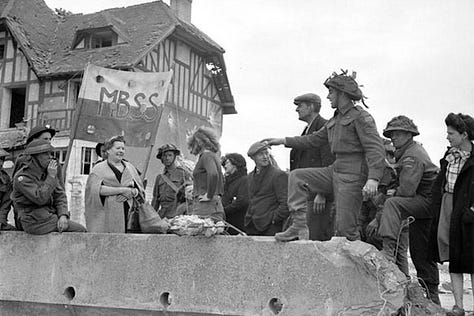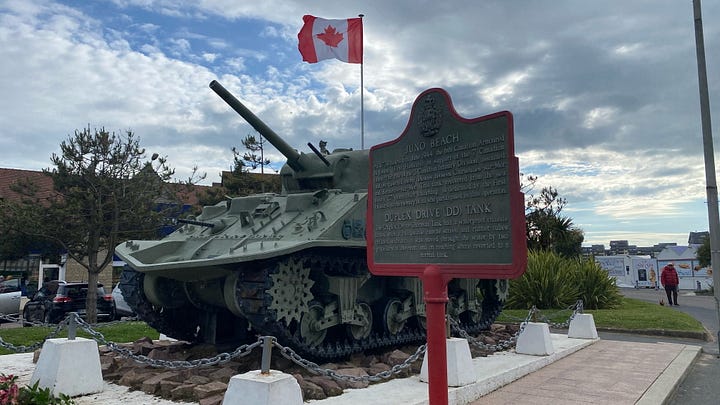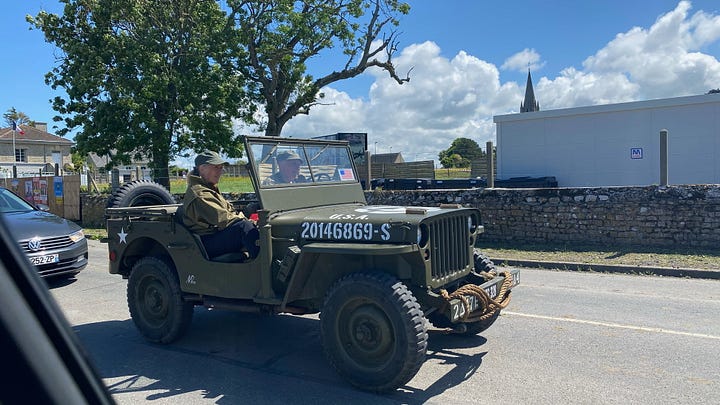The house that Canada… shot
The first French home liberated on D-Day was captured by a squad of Canadian soldiers 20 minutes after landing on bloody Juno beach. Today it's known as Canada House
For many Canadian soldiers landing in the small Normandy village of Bernières-sur-Mer on June 6, 1944, a distinctive two-storey villa right on the beach was both a landmark and a target. Virtually untouched by Allied bombing, it was occupied by German soldiers who were firing machine guns at the invading Allied forces.
Along the 8-km stretch of what was code-named Juno Beach, 340 Canadians would die that day and some 574 were wounded, a casualty rate (18-1) that was higher than even the American’s “Bloody Omaha” Beach.






However, 20 minutes after the Canadians landed at 7:15 a.m., the Germans were surrendering in the back garden of the villa that would become the first French home liberated on D-Day, and is now known simply as Canada House.
The D-Day story of the house was unknown to its owners, Nicole and Hervé Hoffer, until Nicole began noticing in the 1980s that people would often stop and stare at the her summer home and take pictures. When she started asking why, the visitors explained that they were veterans and remembered the house from the landings. She began to invite them in and some recounted their personal experiences of the war. It’s a touching story, one that I can’t possibly tell as well as CBC’s Adrienne Arsenault does in this piece that was filmed the week I was in Normandy. You can also read a recent CNN story about it here.


Of the 80 km of five D-Day beaches, Canadians were responsible for an 8-km section which stretched from the villages of Saint-Aubin-sur-Mer to Courseulles-sur-Mer, with Bernières-sur-Mer in the middle. Juno was itself sandwiched between two British landing beaches, codenamed Sword and Gold. Despite the heavy casualties, the Canadians ended up making the most progress toward their ambitious D-Day objectives of any of the Allied troops.
You can find out this and more at the Juno Beach Centre in Courseulles-sur-Mer, a museum and activity centre created by Canadian D-Day and Battle of Normandy veterans. These veterans felt that the Canadian role and sacrifices in Normandy were not properly represented and commemorated in the region and formed an association whose goals are to:
Provide a tangible and fitting memorial to Canada’s participation in the Second World War and recognize the emergence of Canada on the world scene;
Remember and commemorate the sacrifices made by all Canadians who were part of the Allied victory in all theatres of war and at home; and
Educate adults and children of today and future generations about the role of Canada in preserving the freedoms we are privileged to enjoy today.
One of the unusual aspects of the museum is that its depiction of Canada isn’t limited to its war efforts and includes some of our darker past, including the treatment of Indigenous peoples and French-English language conflicts.




Despite the creation of the Juno Centre, the role of Canadians in the Battle of Normandy is still overshadowed by the war memorials created by both the British and American forces, with impressive displays, monuments and museums at Gold and Omaha beaches. On this 80th anniversary in particular, American and British celebrants were out in force, and even a week before the official anniversary, re-enacters driving restored military vehicles were parading through the villages along the Normandy coast.


In the villages themselves, however, tributes to the Canadians were everywhere, remembered with appreciation and respect even tho almost no one who actually lived through the landing is still here to tell the tale.







And the Canadians? I suspect most were like me, quietly appreciating the French acknowledgement of the role we played in their liberation, even as that effort killed 20,000 of their fellow citizens. Like those Canadians who discreetly snapped holiday photos of Nicole Hoffer’s villa, I wasn’t there to be seen but to observe, appreciate and remember the sacrifices of the last generation of Canadians to fight in a global war.
At least, I fervently hope it’s the last.
See you next week as I wrap up my Normandy excursion on Gold and Omaha beaches, Pegasus Bridge and at the Allied war cemetery in Ranville.









By far the most touching moment of my only visit to Normandy. You perfectly describe contemporary Normandy. This beach stretches forever. You close your eyes, and imagine the horror 80 years ago. Thanks for this bit of info, i totally didn’t know that part.